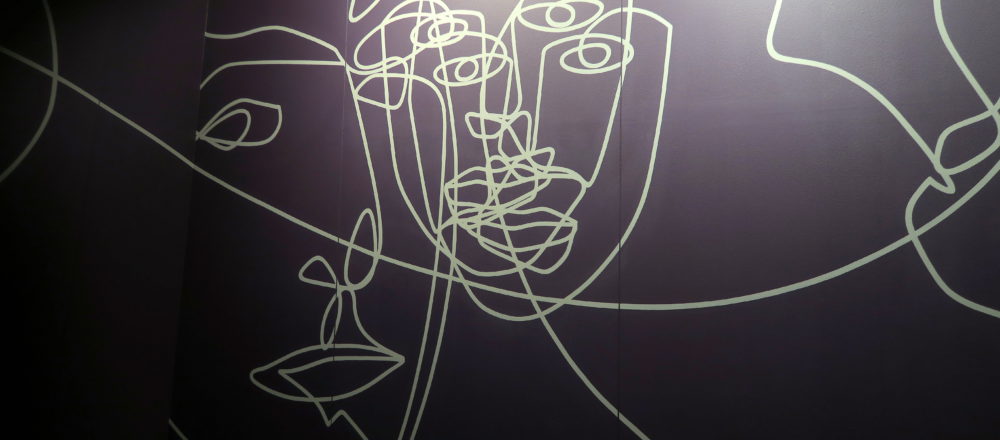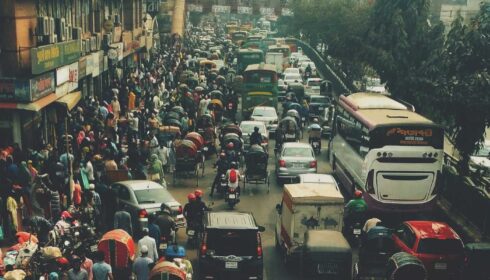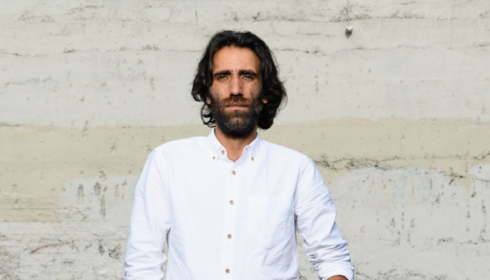Identity: Yours, Mine, Ours | Moya McFadzean | Immigration Museum
How would you write your life story? And has Australia really escaped its racist past? These are some of the questions explored in Identity: Yours, Mine, Ours – a permanent exhibition currently on display at the Immigration Museum in Melbourne.
Through a collection of written anecdotes and interactive multimedia displays, Identity showcases voices from Australians of diverse backgrounds on what it means to belong in a multicultural Australia. Curated by senior migration curator Dr Moya McFadzean, the exhibit encourages us to boldly confront our racial prejudices and wholeheartedly acknowledge that each of our personal identities play a part in creating a cohesive society.
A rectangular hallway marks the entrance to Identity and Australian filmmaker Lynette Wallworth’s video ‘Welcome’ features at the end of it. This video portrays Australians of different ages, backgrounds and skin colours smiling and waving, or frowning with their backs turned.
As visitors walk down the dim hallway, they are made to feel welcome when pleasantries flash across the screen. On the other hand, once the cooler reception is personified, they get a firsthand experience of what it is like to be a social outcast.
Identity is complex and ever-changing, and the exhibit highlights this through a section titled ‘First Impressions’. This display comprises written accounts from migrants and different generations of Australians, expressing their feelings about the food that they eat, the names they are called and the clothes they wear.
Art and fashion are certainly two mediums through which migrants are able to obtain a greater sense of acceptance in Australia.
Some admit to changing their non-Anglo name to get ahead in the job market, while others proclaim they are proud of eating traditional food and wearing attire from their home country. This gives rise to the notion that one may adopt certain identities to feel a sense of inclusion within particular facets of their lives in Australia – in order to fit in, sometimes one may need to downplay a part of their heritage in certain contexts.
The ‘People Like Me’ section of Identity looks at the creative ways in which migrants adapt to integrate into the wider community. Numerous cultural artifacts are on display here, including Shimotsuke paper dolls made by Japanese migrant Masumi Hiraga Jackson, who made a living by sharing her craft through workshops in Melbourne. There is also a footy hijab in the Australian Rules Football colours created by Melbourne designer Shanaaz Copeland. Art and fashion are certainly two mediums through which migrants are able to obtain a greater sense of acceptance in Australia.
Everyday racism is explored in a corner of the exhibit called ‘People Like Them’. Visitors are given the opportunity to sit in a space resembling the interiors of one of Melbourne’s trams and watch the short film Who’s Next Door, which looks at racial prejudice on public transport. With the perspectives of racial perpetrators, victims and bystanders portrayed, one is encouraged to delve into how each of us may perceive racism in public.
Consequently, Identity draws attention to the idea that what might be racist to one person may not necessarily be racist to someone else – even if that someone else shares the same background as us. Alongside a display of Aboriginal artifacts and household name Australian snacks and toys from past and present generations is the phrase ‘One person’s biscuit is somebody else’s insult’. Notably, some of us might be comfortable identifying with stereotypes, while some of us might prefer to challenge them instead. .
Interestingly enough, Identity shies away from specifically defining the notion of multiculturalism as it does racism. Multiculturalism is more than simply eating diverse cuisines and taking part in various cultural celebrations. Rather, multiculturalism also entails respecting each other’s lifestyle choices, customs and traditions – which is the sentiment Identity ultimately evokes. Towards the end of the exhibit, signs provide suggestions on how to tackle racism as it happens around us and talk about cultural difference.
Overall, Identity acknowledges that no two of us experience the same stories in today’s diverse Australia. The exhibit emphatically shows how many Australians are proud of their heritage and are not afraid to share it when given the opportunity. While we have some way to go towards fighting racism, a good number of us are more than ready to champion and celebrate individual stories and experiences – the very essence of a multicultural society.
Identity: Yours, Mine, Ours is now showing at the Immigration Museum in Melbourne, Victoria.
Mabel Kwong is a freelance writer and blogger interested in the questions of multiculturalism, diasporas and what it means to be an Asian person living in Australia. She blogs at www.mabelkwong.com and tweets @TheMabelKwong.




